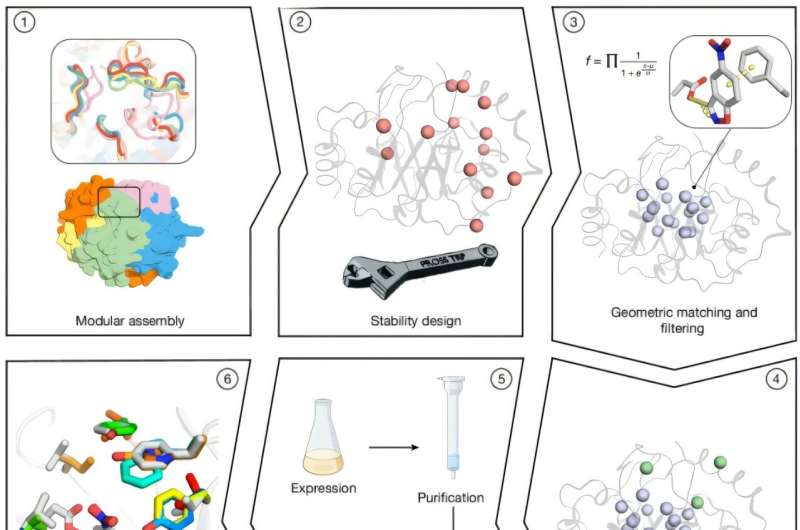Researchers Create High-Efficiency Enzymes Using Advanced Computation

A team of researchers at the Weizmann Institute of Science has developed a groundbreaking computational method for designing enzymes that exhibit catalytic efficiencies exceeding 100,000 M −1 s −1. This achievement brings the performance of these engineered enzymes close to that of natural biocatalysts, marking a significant advance in the field of synthetic biology.
The study, titled “Complete computational design of high-efficiency Kemp elimination enzymes,” was published in the journal Nature. It outlines a fully computational approach that allows for the creation of stable and active enzymes with little need for further optimization. Traditional methods of enzyme design often lag behind natural processes, which perform biochemical transformations with remarkable speed and precision. The new methodology addresses this gap by enabling the design of enzymes capable of catalyzing reactions that are typically outside the scope of naturally occurring enzymes.
Innovative Design Process
To achieve these results, researchers generated thousands of TIM-barrel backbones, a common protein structure found in many enzymes. They utilized combinatorial assembly and design techniques, combining fragments from homologous proteins. The central β-barrel of this structure is oriented towards the active-site cavity, creating numerous opportunities to optimize the placement of catalytic and substrate-binding groups.
Using advanced Rosetta atomistic calculations, the team filtered millions of designs based on an objective function that balanced energy and desolvation of the catalytic base. Ultimately, they selected 73 designs for experimental testing, of which 66 were successfully expressed in a soluble form. Notably, 14 of these designs exhibited cooperative thermal denaturation behavior, indicating their stability under various conditions.
The research team found that by introducing 5–8 active-site mutations per enzyme variant, they could significantly enhance catalytic efficiencies. One variant, derived from Des61, achieved a catalytic efficiency of 3,600 M −1 s −1 and a turnover rate of 0.85 s −1. More impressively, eight designs based on Des27 demonstrated catalytic rates that were up to 70-fold higher than the original, with Des27.7 reaching a catalytic efficiency of 12,700 M −1 s −1 and a turnover number of 2.85 s −1.
A remarkable breakthrough occurred with a single-point mutation that replaced phenylalanine at position Phe113 with leucine, boosting the catalytic efficiency to 123,000 M −1 s −1 and the turnover rate to 30 s −1.
Implications for Future Applications
The researchers concluded that the combination of active-site preorganization and the ability to adopt multiple catalytically competent conformations is what sets this design apart from previous efforts. The most successful variant demonstrated high stability, maintaining functionality at temperatures above 85 °C and achieving catalytic efficiencies comparable to those of natural enzymes.
The findings from this research confirm that current atomistic computational methods are reliable enough to produce efficient enzymes without the need for iterative laboratory testing or reliance on artificial intelligence-generated scaffolds. As researchers continue to refine these methods, there is potential for fully programmable biocatalysts that could revolutionize various fields, including product manufacturing, therapeutic applications, pollution remediation, and green chemistry.
This significant advancement in enzyme design not only opens up new avenues for scientific research but also holds promise for addressing a range of real-world challenges. The work was led by a dedicated team, including authors Dina Listov and Zhuofan Shen, who contributed to the comprehensive study published in Nature.
The implications of this research extend far beyond the laboratory. As the field of synthetic biology evolves, the ability to create efficient enzymes on demand could lead to innovative solutions in various industries, paving the way for a more sustainable future.






